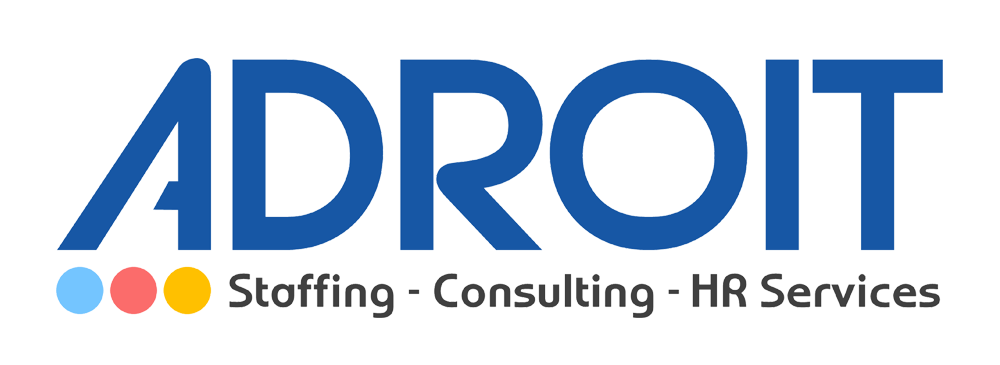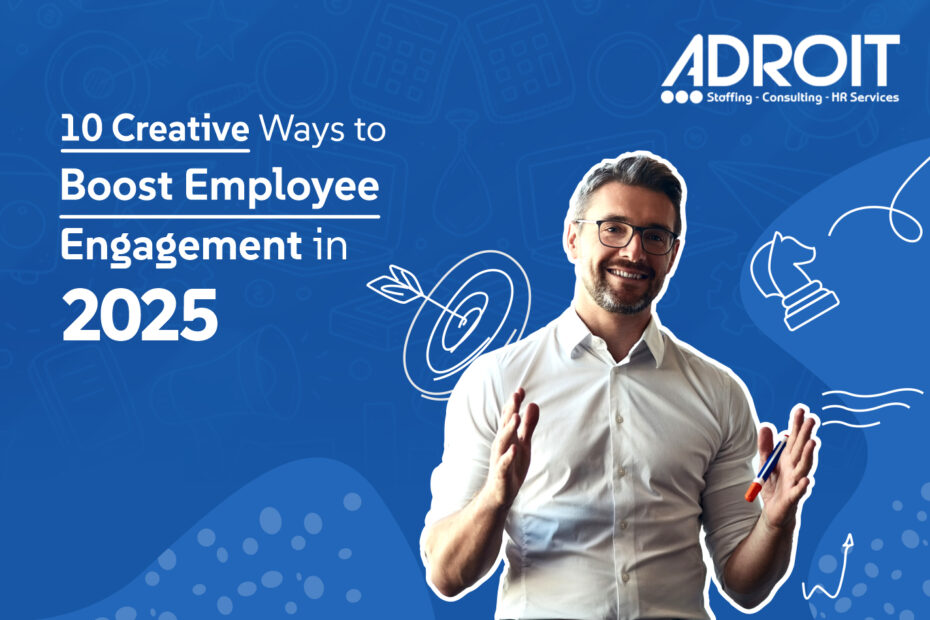Introduction
In 2025, employee engagement is more important than ever. With a rapidly changing work environment, evolving expectations from employees, and the rise of remote and hybrid work models, it’s essential for companies to find innovative ways to engage and motivate their workforce. Engaged employees are more productive, satisfied, and loyal to their companies. In this blog, we’ll explore 10 creative and effective strategies to boost employee engagement in 2025 and ensure your team remains committed and excited about their work.
1. Gamify Employee Recognition and Rewards
Gamification can transform the traditional employee recognition system into a fun and engaging experience. By introducing elements like point systems, leaderboards, and badges for achievements, employees can earn rewards in a competitive and interactive way.
- Why It Works: Gamification taps into employees’ natural desire for competition, recognition, and achievement. It adds an element of fun while also motivating employees to perform at their best.
- How to Implement It: Use platforms or tools that allow you to create gamified systems for recognizing accomplishments. Employees can earn points for meeting goals, completing tasks, or embodying company values, and redeem them for rewards such as gift cards, time off, or special privileges.
2. Focus on Employee Well-Being
The importance of mental health and well-being cannot be overstated. In 2025, employees are looking for companies that care about their holistic well-being, including their physical, emotional, and mental health.
- Why It Works: Prioritizing employee well-being not only boosts engagement but also reduces burnout and absenteeism, leading to a more productive and satisfied workforce.
- How to Implement It: Offer flexible work hours, wellness programs, meditation or mindfulness sessions, gym memberships, and mental health support. Encourage a healthy work-life balance by allowing employees to take time off when needed and creating an environment where they feel comfortable discussing their mental health.
3. Offer Personalized Learning and Development Opportunities
Employees are increasingly seeking companies that invest in their professional growth. Offering personalized learning and development (L&D) opportunities can greatly enhance employee engagement by helping them build new skills and grow in their careers.
- Why It Works: Employees are more likely to feel engaged when they see opportunities for career advancement and personal development. Tailored L&D programs show employees that the company is invested in their success.
- How to Implement It: Create a learning platform that allows employees to choose courses based on their interests and career goals. Offer mentorship programs, attend conferences, or bring in industry experts for internal workshops and training sessions.
4. Introduce Flexible Work Environments
With hybrid and remote work becoming more common, flexibility is key to employee engagement in 2025. Allowing employees to choose where and when they work can help foster a sense of autonomy and trust.
- Why It Works: Employees value the flexibility to work in a way that suits their personal lives, boosting their satisfaction and reducing stress. It also helps attract and retain top talent.
- How to Implement It: Offer flexible hours, remote work options, or even a “work-from-anywhere” policy. Invest in tools that support remote work, like project management software and communication platforms, to ensure employees can stay connected and productive, regardless of their location.
5. Foster a Culture of Transparency
Transparency in decision-making, communication, and leadership builds trust and a strong sense of connection among employees. When employees feel they are in the loop and their opinions matter, they are more likely to engage and contribute to the company’s success.
- Why It Works: Transparent organizations create a sense of ownership and accountability. When employees understand company goals and how they contribute to them, they are more motivated to perform well.
- How to Implement It: Regularly communicate with employees about company updates, changes, and strategies. Encourage an open-door policy where employees feel comfortable discussing their concerns and providing feedback.
6. Celebrate Milestones and Achievements
Celebrating milestones, whether it’s a personal achievement or a company-wide success, can help employees feel valued and appreciated. Acknowledging both small and big wins boosts morale and reinforces a sense of belonging.
- Why It Works: Celebrations create a positive environment where employees feel acknowledged for their contributions. It also fosters camaraderie and team spirit.
- How to Implement It: Recognize birthdays, work anniversaries, promotions, and project completions with celebrations, virtual happy hours, or personalized thank-you notes. Ensure employees receive public acknowledgment during company-wide meetings or through internal communication channels.
7. Create Opportunities for Social Connections
Employees are more engaged when they feel they belong to a strong community within the company. Building social connections at work can help reduce feelings of isolation, especially for remote workers, and increase overall engagement.
- Why It Works: Social interactions lead to stronger relationships, better teamwork, and improved collaboration. Employees who have positive relationships with their colleagues are more likely to stay engaged and productive.
- How to Implement It: Organize virtual and in-person social events, team-building activities, and interest-based clubs or groups. Host “lunch and learn” sessions or informal get-togethers to encourage casual networking and social bonding.
8. Encourage Autonomy and Empower Employees
Empowering employees by giving them more control over their work fosters a sense of ownership and responsibility. Allowing employees to make decisions and take initiative can increase engagement and drive.
- Why It Works: When employees are trusted with greater autonomy, they feel more motivated to contribute their ideas and skills. It also fosters creativity and innovation.
- How to Implement It: Encourage employees to take on leadership roles in projects or initiatives. Support them in making decisions and give them the flexibility to explore new ideas without fear of failure.
9. Provide Clear Career Paths and Growth Opportunities
Employees who understand their potential career paths within the company are more likely to stay engaged and committed. Offering clear advancement opportunities allows employees to see a future with the organization and motivates them to perform at their best.
- Why It Works: Employees are more engaged when they see that their hard work will be rewarded with career growth and development.
- How to Implement It: Develop transparent career progression frameworks and ensure that employees are aware of the skills and achievements required for promotion. Regularly check in with employees about their career goals and aspirations.
10. Promote Work-Life Balance
A healthy work-life balance is essential for keeping employees engaged and preventing burnout. Encourage employees to take time off, disconnect from work, and focus on their personal lives.
- Why It Works: When employees feel supported in maintaining a work-life balance, they are more likely to be productive, satisfied, and engaged in their roles.
- How to Implement It: Encourage employees to set boundaries between work and personal life. Offer flexible time off, mental health days, and a supportive environment where employees feel comfortable prioritizing their well-being.
Conclusion
In 2025, boosting employee engagement requires creativity, flexibility, and a focus on well-being, development, and work-life balance. By implementing these 10 creative strategies, companies can cultivate a positive and motivated workforce that drives success and growth. Remember, engagement is not a one-time initiative—it’s an ongoing effort that requires consistent attention, feedback, and adaptability. Start applying these strategies today to ensure your employees are engaged, motivated, and ready to contribute to your company’s future success.


1 Comment
its true